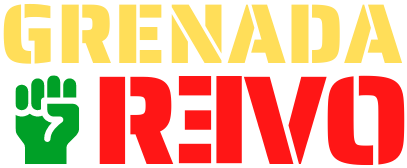Following the Bloody Wednesday execution of Grenada Prime Minister Maurice Bishop by his fellow NJM members, the USA led an invasion of Grenada on October 25, 1983 code-named Operation Urgent Fury.
The operation authorized by then US President and commander in chief Ronald Reagan, was at the time the largest US military operation since Vietnam.
The USA rationalized the invasion (which they refer to as a ‘rescue mission’) by saying that:
- The St. George’s Medical School students were in danger – Officials of the school denied this. Students denied this.
- The US was invited to intervene by the signers of the OECS – This would only have been internationally legal had Grenada invaded another island. The decision was made by four of the seven signatories. The invitation was actually drafted by the US State Department.
- Grenada threatened US security with the construction of a military airport – Grenada’s new Point Salines airport was a civilian airport built to accommodate tourists. Studies and planning for the site had begun more than 25 years beforehand.
Our safety was never in danger. We were used as an excuse by this government to invade Grenada. They needed a reason to go in, and we were it!
— Gary Solin, Bursar at St George’s Medical School
The US feared that if the RMC learned about the invasion the medical students ran the risk of being taken hostage. As a result, the operation was kept top secret; not even Congress knew what was planned.
The force of the US military was no match for the Grenadian troops:
David vs. Goliath
7,000 US troops + 300 OAS troops VS. 1,500 Grenadians + 700 CubansShortly before 5:30AM on October 25, 1983, US Marines, Rangers and Special Ops landed in various locations throughout Grenada:
- US Marines arrived via helicopter at Pearls Airport on the island’s north-east coast.
- US Rangers landed by parachute at the almost-complete Point Salines airport located on the south-west tip of Grenada and later at the nearby True Blue campus of the medical school.
- Special Ops units were responsible for securing a variety of locations around the capital of St Georges, specifically:
- The Governor General, Sir Paul Scoon’s home
- Fort Rupert, the army headquarters
- Richmond Hill Prison
- Radio Free Grenada broadcast studios
The medical students were evacuated to Barbados. Prisoners being held by the NJM and RMC were released. NJM leaders were found and arrested.
Fighting lasted three (3) days.
Urgent Fury resulted in 24 civilian deaths many of whom were patients in Richmond Hill psychiatric hospital inadvertently bombed by US planes.
Many skeptics believe that this invasion had little to do with Bishop’s death and was instead motivated by the USA’s desire to remove any trace of left-wing governments in the Caribbean.
The invasion (or rescue mission) was denounced by many including the United Kingdom and the United Nations.
In light of the murders, the chaos, the 24-hour curfews and subsequent threats lodged by the newly-formed Revolutionary Military Council, the arrival of US forces (or anyone for that matter) was welcomed by the majority of Grenada’s terrified population and seen as a rescue mission.
In remembrance of this day, October 25th is celebrated as Thanksgiving Day, a national holiday in Grenada.
Interestingly…
- There is some evidence that as early as 1981 an invasion led by US may have already been planned. [Beginning in 1981, the US rehearsed the invasion of Grenada openly. It bombed the Puerto Rican island of Vieques. During this make-believe scenario – Ocean Venture – Americans are held hostage.]
- The American press was kept out of Grenada for days following the invasion. When they were finally admitted to Grenada, the rest of the world saw photos of smiling Grenadians welcoming the invasion.

